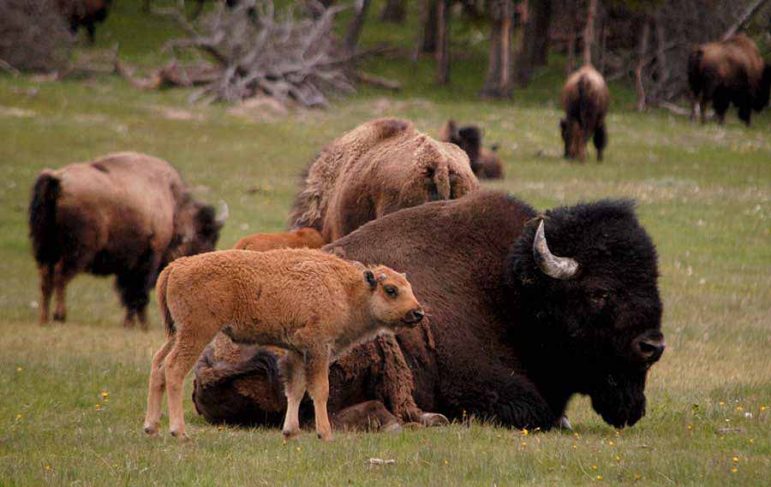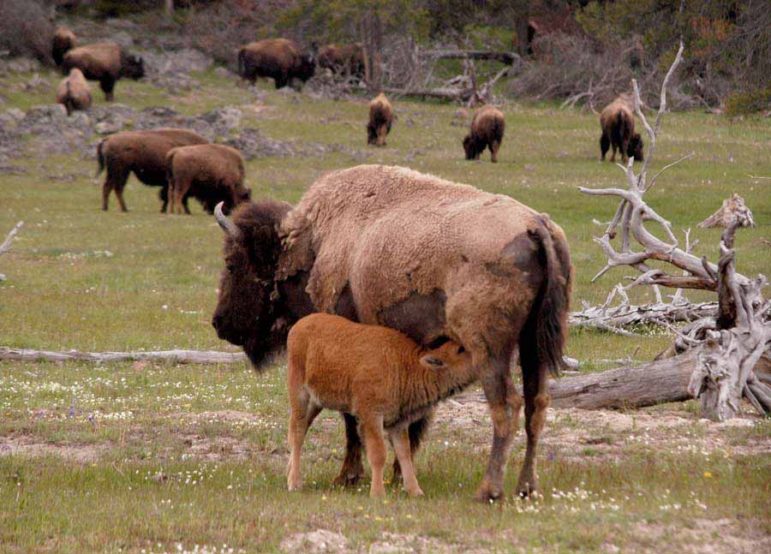
An annual bison population survey released by Yellowstone National Park shows an estimated jump in nearly 9 percent over last year.
Based on a series of aerial surveys, researchers estimate that 4,600 bison live in Yellowstone, according to results made available Wednesday by the park’s public affairs office.
There are approximately 3,200 bison in the northern herd and 1,400 in the central herd this summer. There were about 700 calves-of-the-year observed in a June aerial survey.
This year’s observations represent an increase of 8.75 percent over last year’s count. The peak population estimate of 5,000 bison was recorded in the summer 2005.
Researchers said the observed rate of population change this past year is within the expected natural range for wild bison.

The park’s annual population estimate is used to inform adaptive management strategies under the Interagency Bison Management Plan. The cooperative plan is designed to conserve a viable, wild bison population while minimizing the risk of transmission of the disease brucellosis between bison and cattle.
Both bison and elk are carriers of brucellosis, an infectious disease which can cause miscarriages among livestock. A brucellosis outbreak among cattle herds can be financially devastating, requiring widespread livestock quarantine and euthanasia.
National Park Service managers have long struggled with how to handle hundreds of bison moving out of the park along the Yellowstone River during harsh winters when heavy snow and cold temperatures drive the animals to seek milder habitats and more abundant forage.
Researchers are working on predictive models to help determine what factors might trigger large numbers of bison to migrate through the park’s north entrance, for instance, and through the small town of Gardiner, where the animals have the potential to damage property, injure people and complicate ranching operations.
Selective culling at holding facilities near the park has been politically unpopular in the past and proven to be a public relations disaster for the Park Service.
Wildlife managers and policymakers are examining options that include expansion of limited bison hunting outside of park boundaries, transferring some bison to nearby tribal agencies and increasing tolerance for bison outside the park through agreements with private landowners and public land managers.
Contact Yellowstone Gate at 307-213-9818 or [email protected].
